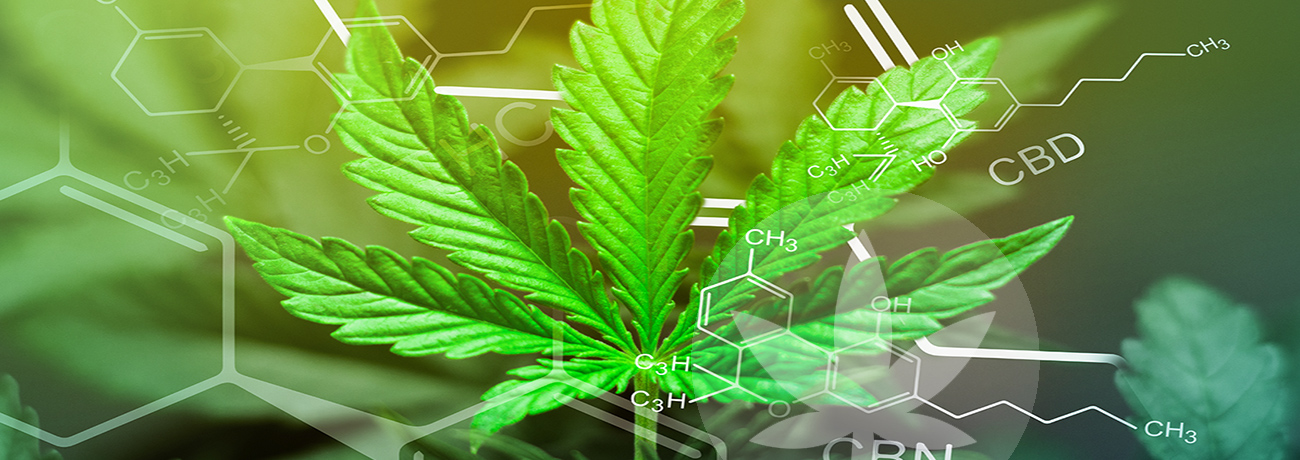CBN And CBD: What Is The Difference?
Published:
What is CBN and why does it matter?

For a long time, the lesser-known cannabinoid CBN (cannabinol) was considered to be an unnecessary byproduct of aged cannabis plants. Unlike THC or CBD, which initially develop as acids during the early stages of a plant's life, CBN is produced a lot later down the line. Before we look at the specific conditions needed to produce CBN, it's worth giving a quick overview of why the compound has caught the eye of researchers.
Preliminary studies have shown what anecdotal accounts have claimed for years, that CBN may have the potential to be a powerful, but natural, sedative. While several smaller trials suggest the compound’s talents extend further than that, in-depth studies are still in their infancy. Encouragingly, CBN also has the ability to synergise well with CBD, thus opening up the possibility of several treatment options.
There are some big differences between CBD and CBN
The majority of cannabinoids interact with receptors linked to our endocannabinoid system (ECS). In doing so, it is possible for such compounds to trigger a wide range of biological effects. Although both CBD and CBN may have a similar genetic structure, CBD indirectly influences our ECS through numerous types of receptors, while CBN takes a more direct approach.
In addition to having a strong affinity for CB2 receptors, CBN also has a partial liking for CB1 receptors, much like the most prominent cannabinoid within the cannabis species: THC. There is a good reason the two compounds share some attributes—without THC, you would not have CBN.
Rather than being the result of acids binding with enzymes, CBN is produced much later in a cannabis plant’s development. Cannabinoids are volatile by nature and continue to change when exposed to different environmental factors. There are two ways to end up at CBN. The first is to transform THCA (raw THC) into CBNA by leaving it to degrade over time. If you then apply heat, the extra carbon molecule is removed (the “A”). The alternative is to leave already activated THCA (THC) to, again, degrade over time. Either way, the result is the cannabinoid in question—CBN.
CBN may start life as THC, but it won’t get you high
It is a perfectly natural assumption—if CBN can only be produced when THC has been left to age, then most people assume it will have comparable characteristics. Thankfully, CBN is non-psychoactive, and unlike THC, is not scheduled as part of the United Nations’ Single Convention on Narcotic Drugs, or the Convention for Psychotropic Substances. This means researchers can gain much easier access to the compound—good news when you consider that the cannabinoid is quite elusive. Remember, most of the time, hemp and cannabis are harvested when CBD or THC content is at its peak. CBN requires a lot more patience if you want to extract significant quantities.
We know that we need to age THC before we can create CBN. We also know that it shows an affinity for CB2 (and some CB1) receptors. Given that CBN would appear to have characteristics from both CBD and THC, but won’t get you high, the next obvious question is: what does happen when we consume the compound?
What can you expect from CBN?
Steep Hill Global, one of the world’s leading cannabinoid research companies, suggests that “of all the cannabinoids, CBN appears to be the most sedative”. Moreover, they found that very little was needed to provide a sedative effect lasting 5–6 hours. Just 2.5–5mg of CBN was enough to provide “the same level of sedation as a mild pharmaceutical sedative”.
Their conclusions appear to match studies carried out on mice. Published on the NCBI, CBN significantly extended the sleeping time of rodents when compared to other cannabinoids. Combined with a lack of significant side effects, CBN is an exciting prospect for future treatments.
Further preclinical studies into the potential capabilities of CBN include treating psoriasis, burns, and contributing to the promotion of bone tissue growth.
The future for CBN
Like many of the cannabinoids that exist within hemp and cannabis species, we are only just starting to truly explore their potential—whether that be because of a compound’s illegal nature, or in the case of CBN, the difficulty of extracting large quantities because of the conditions needed to produce it.
Research into this potent sedative is ramping up. However, what we do know so far points toward a future of great possibility. The lack of psychoactive side effects will be a huge advantage for the compound, as this makes the process for more definitive studies easier to navigate.






